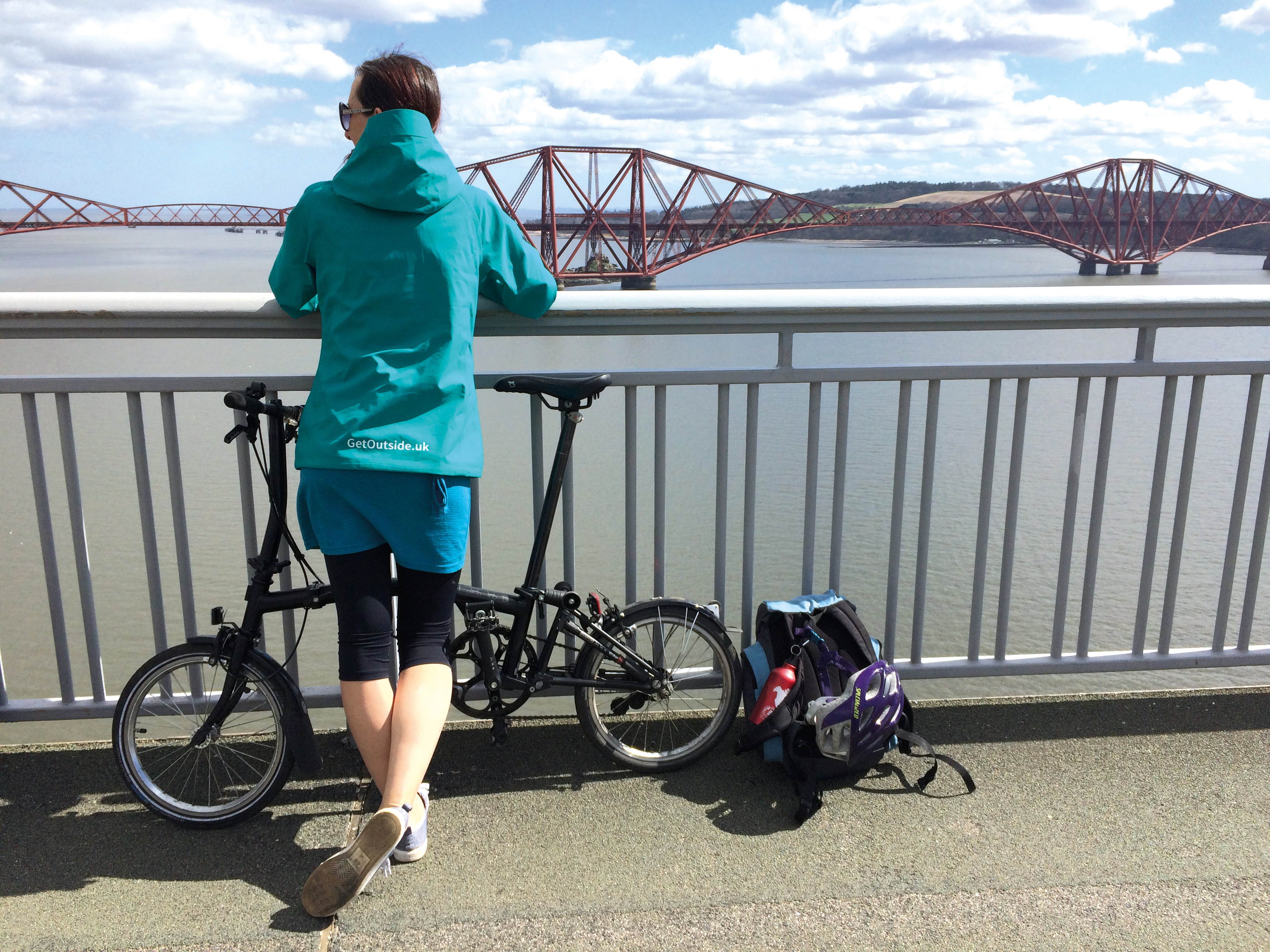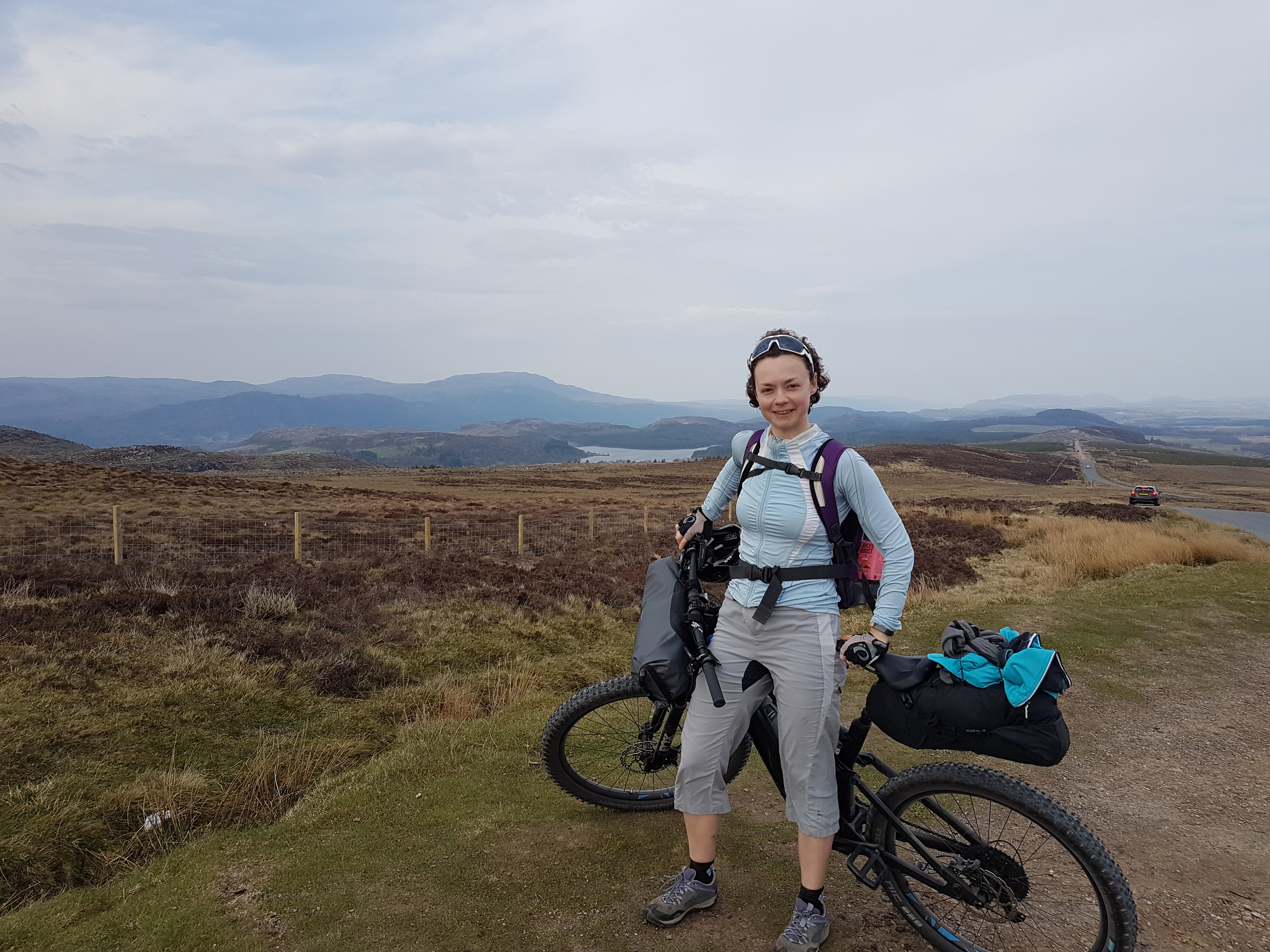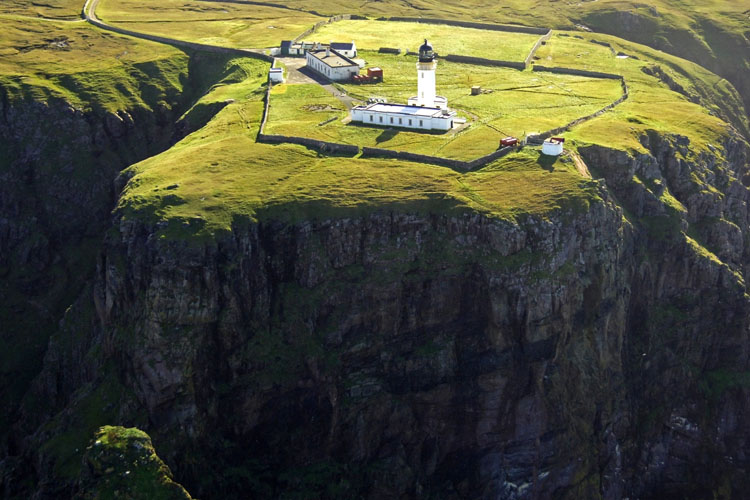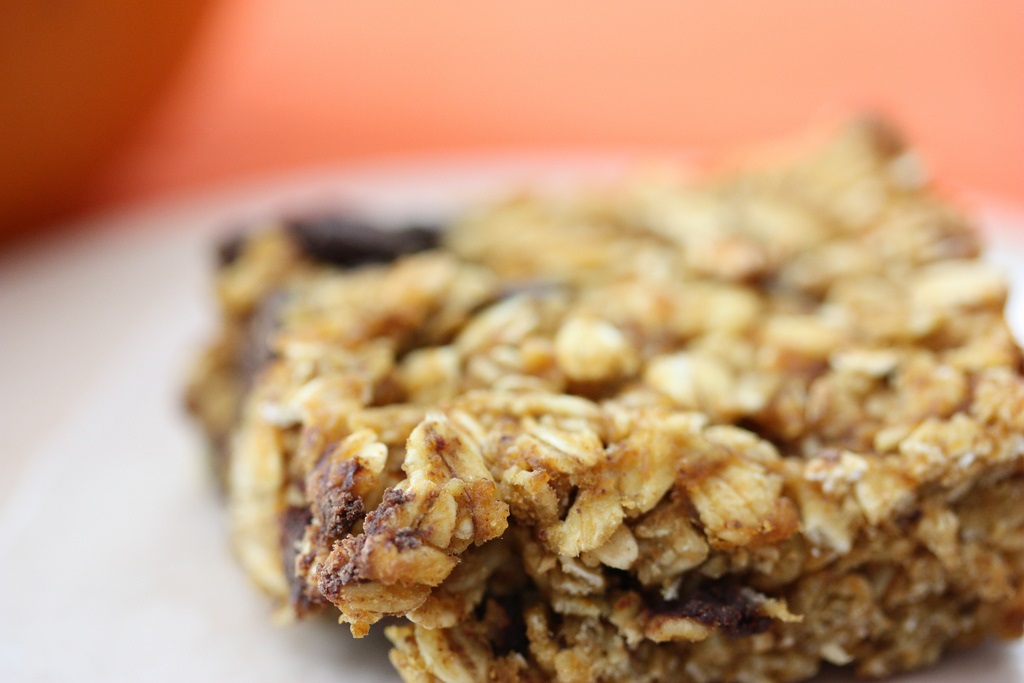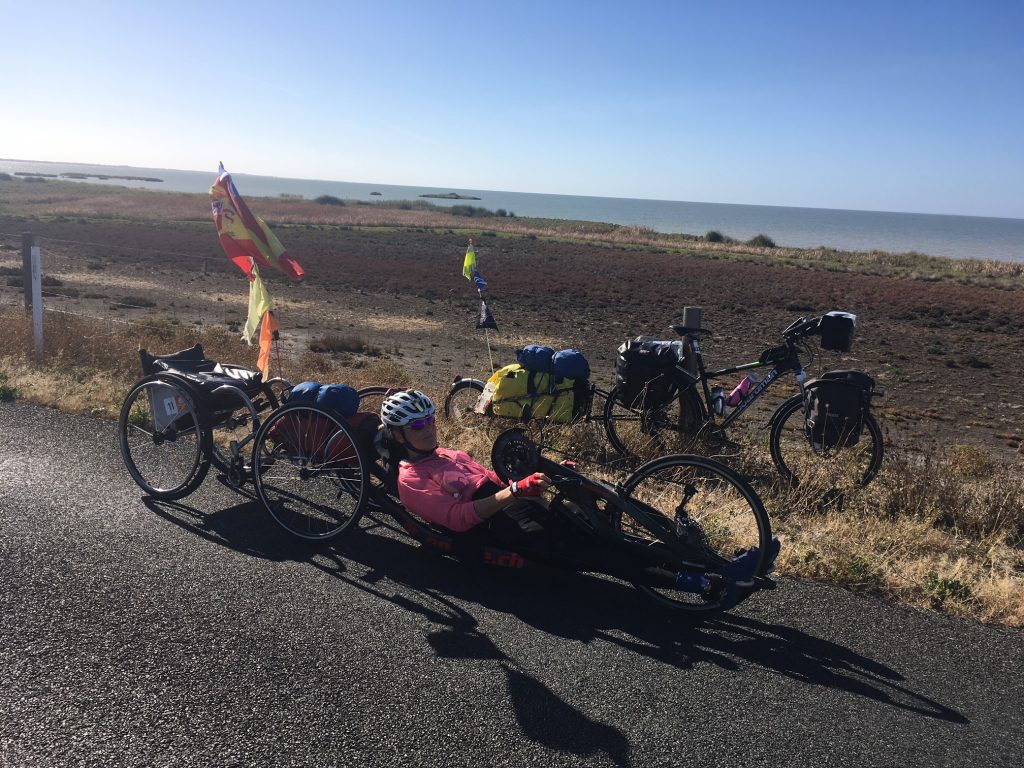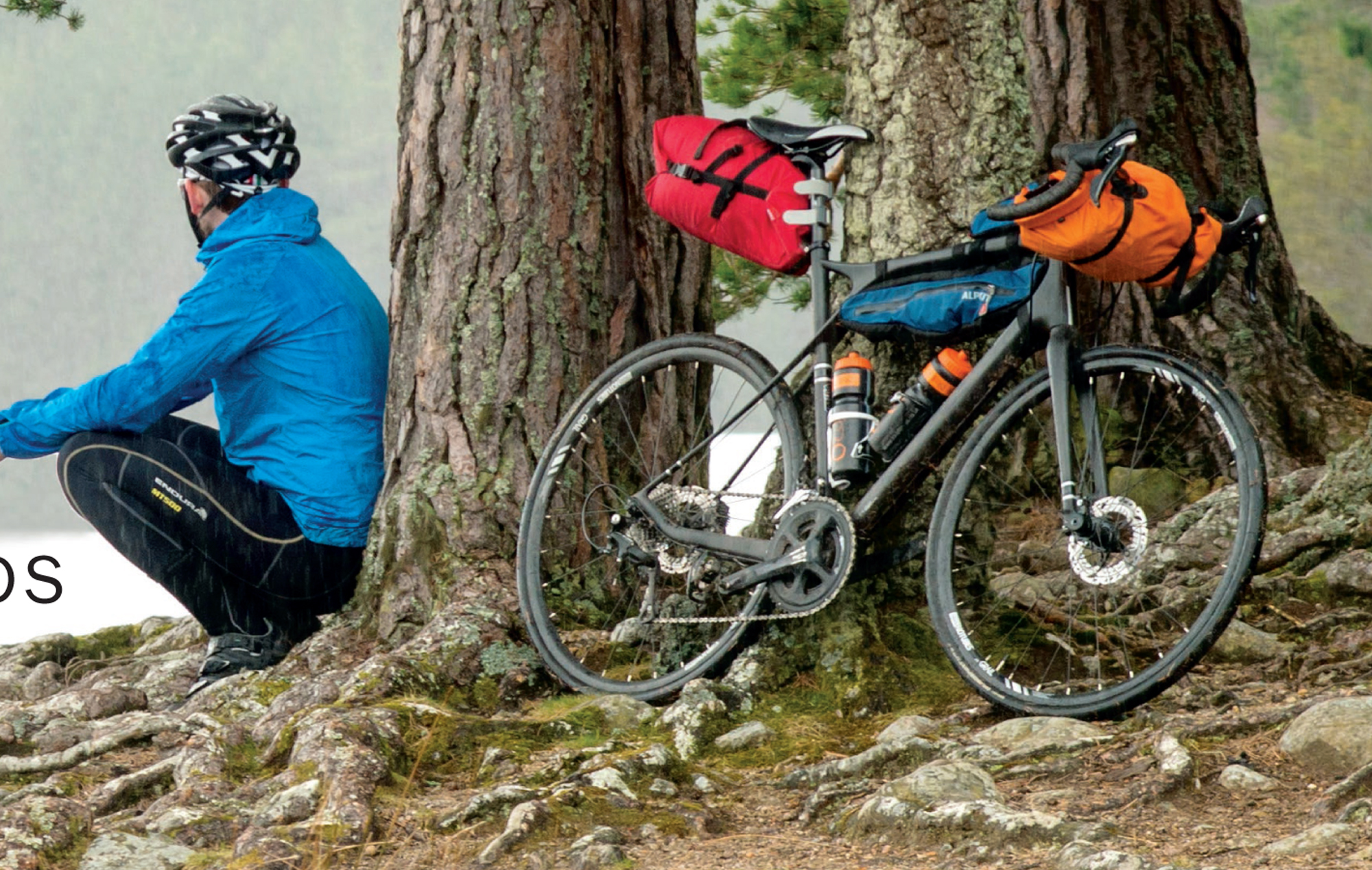Great Rides: Summer can wait (Scottish Highlands)
Friday afternoon on the fringes of winter: my phone buzzes to remind me it’s 3pm. How quickly can I manage my Superman-style transformation? I rush into the bathroom as an office worker and emerge moments later in Lycra. My bike is packed and ready to go. It’s time to fly – figuratively.
While I regularly catch flights or hop in the car to go and ride my bike somewhere new, this weekend I’m doing things differently. I’m conscious that my carbon footprint looms large, despite travelling solely by bike during the week. So instead of heading for the airport or driving north up the A9, I’m riding to Edinburgh station instead.
The train whizzes me north towards Aviemore, and I sit staring through my reflection into the blue twilight deepening over the hills. I’ll need lights this evening.
All mapped out
There are so many places to explore by bike in Scotland, thanks to its enlightened outdoor access laws, that it took me a while to decide on my route. I had scanned three spread-out maps for potential gravel tracks linking together two railway stations.
Eventually, I reckoned I’d cracked it. I’d start in Aviemore on Friday evening and hopefully end in Glasgow on Sunday. The maps were folded away, the bike’s bags packed. I always pack and prepare riding gear at least the night before, even for weekend trips. It’s easy to forget small important items like a penknife or toilet paper. So I have a standard list that I can adjust as needed.
For this trip, as well as the bivvy bag I always take in case I don’t reach where I’m headed for the night, I was packing a Gore-Tex jacket, warm gloves, boots, and waterproof shorts. It was late autumn – like early spring, a ‘shoulder season’ for bikepacking. Yet a full weekend of cycling in Scotland doesn’t need to be the preserve of long summer days. Spring and autumn avoid the midges. While winter is a magical time to visit the Highlands, it can be too snowbound for trips like the one I was attempting.
Into the night
Aviemore station is deserted when I alight with my bike. It looks Victorian, with lantern-shaped lights casting orange glows into the misty darkness beyond the platform. It could easily be the setting for a classic film.
I pop over the road to the fish and chip shop, wolf down some calories, and set off into the night. Riding after dark is something that intimidates us more than it should. I love riding in dark, atmospheric forests, powerful lighting picking out owls overhead and the eyes of darting deer.
My target for the night is a bothy, and once I leave the forests around Aviemore and cross the A9 from behind the ruined Ruthven Barracks, it’s not far. I finally spot the building alongside the wet track. Glancing at my GPS, I find I have clocked up 60km on this short warm-up ride. I’m ready for some hot chocolate before sleeping. The bothy is empty but cosy and relatively warm.
Loud knocking at the bothy door stirs me from my sleep. I am met by two Glaswegians: ‘Hiya pal, you hungry?’ A little dazed and confused by their appearance, I reply. ‘Er, I’m kinda half asleep to be honest.’ ‘No problem. Where are you headed?’ ‘I’m riding to Glasgow.’
This is met by bemusement; I’m thoughtfully offered a lift there tomorrow. I decline, explaining that this rather defeats the purpose of cycle touring. With a smile, they’re off again into the dark to wherever they’re staying, and I head back to sleep.
Lochs and glens
Today’s plan is to head northwest initially on General Wade’s Military Road. Built in 1731, with some of the original bridges still usable today, this track links the Ruthven Barracks to Fort Augustus. Centuries after General Wade, the Highlands are again undergoing a boom in track building – not for military purposes, but for estate access and the growth in hydro schemes and wind farms. This new track development divides opinion, some criticising scars on the landscape, others welcoming the new jobs and diversification in a region with little industry. For cyclists, the new tracks provide weatherproof access through beautiful scenery. They’re ideal for long-distance offroad cycle touring.
After breakfast, I head up the rough, steep track to Corrieyairack Pass. The sense of isolation would be complete if a line of pylons didn’t march alongside. Aside from these, a little erosion is probably the only change since General Wade used this road. The traverse along the top is misty but I soon drop down out of it to be met by outstanding views of the Great Glen and the mighty Loch Ness. The light streaks across the loch’s surface in shafts.
I turn a corner, losing the loch but now facing a fancy pink castle surrounded by a deer park. I stop for a chat with the gamekeeper and we discuss the stags we can hear in the hills. It’s mid rutting season, and he tells me this morning he found a stag that had died in a fight.
Heading south from Fort Augustus, the Great Glen is mostly flat. It’s an easy jaunt to Fort William, where I stop for food. From here, the West Highland Way (WHW) heads further south. Parts of the WHW are negotiable by gravel bikes, so I plan to combine these with some tarmac sections.
The stony track to Kinlochleven is rugged, the views beautiful. Here I join the road to Glencoe. It’s getting late and the light is fading. An eerie twilight mist envelops the lofty crags. I re-join the WHW at Glencoe ski resort, a smoother off-road section that’s a lot of fun. The darkening purple sky is dotted with bats crossing in front of my lights. Just before Tyndrum, in a pleasant spot by the river, I stop to bivvy for the night.
Sunday passes in a haze as I continue on a mix of roads and tracks to Loch Lomond, where the western shore has a cycle path that’s much easier to ride than the WHW on the east side. I follow this path all the way into Dumbarton. From here, I can catch a train to Glasgow and then onto Edinburgh. I’ve not travelled as far as I planned, but I’ve really enjoyed the route.
Back for seconds
On the train home, I can’t help but look at the map again. I trace my finger from Inverness station, south along the first part of the Great Glen Way. And so the planning begins again. Still buzzing from the weekend’s riding, I get on my phone and book a train for 4.30pm a week on Friday!
It’s colder this time. Peering through the train’s window, I can see a dusting of snow on the tops. The forecast is settled and cool, however, and the sky is clear.
I ride south from Inverness on the Great Glen Way; this northern section is much hillier. Finally, I drop into Loch Ness again, this time from the west. Corrieyairack Pass is a much more gradual and better-surfaced climb heading east, but the short, steep descent is still a walk for me.
A thin cover of snow above 800 metres adds to the drama of the scenery. To fit the miles in along first day, I continue riding into the dark. The stars are out and the ground glistens with the ice of a light frost. It’s a magical feeling riding through forests and over open hillsides in these conditions.
After a long day in cold temperatures and a character-building headwind, I’m relieved to spy Loch Ossian Youth Hostel’s lights, which are reflected in the rippling water. A fire is roaring inside and there’s great company, plus some leftover food. Unlike a bothy, there are comfy beds, toilets, and a hot shower! This is one of the remotest but most scenic of SYHA’s properties.
The next day I awake to perfect views of Ben Nevis and white hills mirrored in Loch Ossian. It is one of the most amazing scenes I can remember. As I jump back on the bike, I realise that my legs are dead and that I won’t be riding far today. Not a problem; I can catch a train at Pitlochry. I cruise along the side of Loch Rannoch, with time for a café stop before my train arrives.


